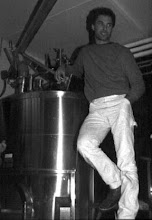That style description - well-known to any beginning homebrewer or casual beer fan - could not be made on our website. In fact, I've just spent the last hour expurgating all references to alcoholic content and relative strength from the descriptions of our beers on our website in order to comply with Federal law. That in response to a letter we recently received from the Federal Tax & Trade Bureau which cited our website as violating the Federal Alcohol Administration Act (FAA Act) and TTB advertising regulations. (That statement above was one of the examples cited in the letter as violating the law.)
(c) Alcoholic content. (1) Advertisements shall not contain the words “strong,” “full strength,” “extra strength,” “high test,” “high proof,” “full alcohol strength,” or any other statement of alcoholic content, or any statement of the percentage and quantity of the original extract, or any numerals, letters, characters, figures, or similar words or statements, likely to be considered as statements of alcoholic content, unless required by State law. This does not preclude use of the terms “low alcohol,” “reduced alcohol,” “non-alcoholic,” and “alcohol-free,” as used on labels, in accordance with §7.71 (d), (e), and (f).
Interestingly, the law does not prohibit you from stating the actual alcoholic content, in numerical terms (ABV). A later section of the Code of Federal Regulations (27 CFR 7.71 (a)) says:
(a) General. Alcoholic content and the percentage and quantity of the original gravity or extract may be stated on a label unless prohibited by State law.
So there you have it. While you are permitted to state that a particular Barleywine weighs in at 11.5% abv and a particular Pale Ale weighs in at 5.1% abv, but you can't say that the former is stronger than the latter. Nor can you assert that one of the things that distinguishes a Double IPA from a regular IPA is that the former has a higher alcohol content than that latter.
Evidently, Uncle Sam doesn't want you, the consumer, to have this information, or, more likely, he doesn't trust what you'd do once you had it. After all, if everyone knew that Imperial Stouts were stonger than their non-Imperial cousins, who knows what would happen?
